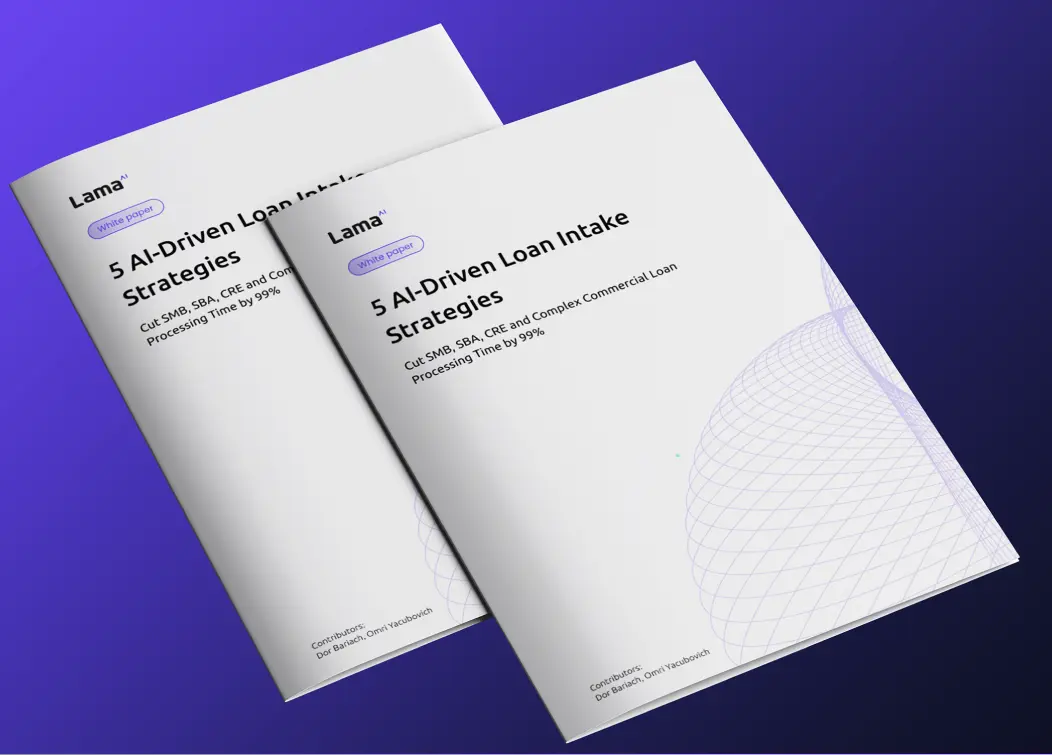Are Bankers Building Their Loan Portfolios Correctly?

This is part of a series produced by Lama AI, a commercial lending network for banks and CUs. In this series, we analyze data to bring attention to growth opportunities in lending.
Every first-year Finance major understands the importance of portfolio diversification. This is doubly important in lending, as the upside from portfolio concentration is capped while the downside can be a loan book wipeout, putting a bank at risk. We took a close look at domestic bank loan portfolio performance and concentration, comparing top-100 banks (“large banks”) and all other banks (“small banks”). The analysis leverages public FDIC call reports and Federal Reserve data over multiple market cycles.
Our findings show that small banks consistently outperform large banks in most loan asset classes, and yet, they have riskier portfolio concentration and underperform in efficiency and customer acquisition.
We see that large banks, despite loan underperformance, are “winning the war” — leveraging their size and reach for efficiency, portfolio diversification, and growth.
In this review, we will explain the analysis, our findings, and actionable steps that banks of all sizes can explore!
Loan Type Performance
We’ll start with a short recap of loan performance among major lending categories.
Lending asset classes have historically and consistently shown drastically different performances. This chart looks at median and bottom quartile charge-off loan performance:

Performance variance (using SD) follows a similar pattern:

Unsurprisingly, Consumer (unsecured) is the riskiest and most volatile asset class, Real Estate has the lowest median charge-off ratio with low variance, and C&I sits in the middle.
The market prices these asset classes accordingly.
Introduce correlations, however, and the data starts becoming interesting. The following chart helps us understand how each two major asset classes are correlated with one another:

While there have been a few market downturns that affected all loan types, there are multiple groupings here that have a low performance correlation to each other! That means that when one asset type underperforms, having the other loan type in a portfolio helps mitigate risk.
Clearly, from a pure risk/reward standpoint, banks should be thinking about the internal correlation of their assets (aside from the performance of each asset class on a standalone basis).
A bank with high RE exposure might consider adding more lease exposure. Consumer heavy loan portfolio? C&I would help balance your risk.
But of course, no one reading this article needs a history lesson about black swans and lending. We all know that different markets can be devastating for highly concentrated loan books.
The issue is that building a loan book isn’t just simple portfolio optimization.
Banks are constrained by aspects such as access to lending opportunities, geography, regulatory constraints, and internal expertise (or lack thereof).
We will discuss some of these constraints and potential solutions in this analysis.
First, though, let’s take a look at how banks are actually deploying their lending capital.
Bank Concentration and Performance
There is a marked difference in lending portfolio allocation between Large Banks (top-100 banks) and Small Banks (all other banks):

We see that large banks tend to diversify among the major asset classes, while small banks are highly concentrated in real estate-heavy portfolios. In fact, small bank lending for non-RE assets has either been static or has declined over the last 30+ years, in both share of portfolio and real dollar terms!
And not only are large banks diversifying — they are drastically increasing their total lending market share over small banks, growing more than 700% faster than the small bank category over the last 10 years.
Even the PPP lending dominance that small banks enjoyed — a rare, risk-free opportunity to build long-term relationships — has not led to a permanent increase in lending activity.
This lack of diversification is a cause for concern — especially noting that small banks have a pronounced advantage in lending performance in multiple asset classes, and overall (category “winners” in bold):

It is telling that for every charge-off advantage, the best-performing bank group has an advantage in performance variance, as well. This corroborates the notion that the performance advantages are systemic and sustainable.
And yet, small banks are not leveraging that advantage towards higher growth!
We’ve seen evidence that loan portfolio diversification can provide an advantage, with diverse assets delivering value and reducing risk through different market cycles.
We’ve also observed that banks of different sizes vary widely in loan portfolio composition and performance.
So — why the differences? And what do they tell us?
What We Can Learn
Small Banks
Small banks have a few significant advantages in lending.
They have impressive loan charge-off performances, a hyper-local geographic footprint, deep customer relationships, and are the highest rated group for customer satisfaction in lending.
However — it seems that while small banks are winning the battle, they are losing the war.
They lag behind larger banks in efficiency (73% mean efficiency ratio vs 56% for large banks), and face significant customer acquisition headwinds as interaction is increasingly online, digital, and driven by marketing.
These challenges have solutions that smaller banks should be exploring — and which are available in the market (without the need for JPM’s tech budget):
- Improved Lending Efficiency
Plug-and-play platforms to improve bank lending efficiency are available for onboarding, customer data collection, loan decisioning automation, and more. - Digitization and Self-Service
Digital interaction helps align with customer expectations while “keeping up” with digital lenders, who are pulling customers away from banks (growing at 8 times the rate of bank lenders).
Digitization has the added advantage of attracting the 35%+ of customers that are currently discouraged from applying for a bank loan due to the long, drawn-out processes. - 3rd-Party Loan Diversification
There are a small number of platforms that help banks deploy capital to diversify their loan portfolios and increase loan-to-deposit ratios.
A bank that is considering those options should note the business model of those platforms, as in some cases they provide bidding systems that tend to increase loan prices and decrease loan profitability.
Large Banks
Large banks have the luxury of evaluating more lending opportunities by leveraging their size, marketing, and technology to reach more customers.That reach results in a lower opportunity cost for each loan application, and provides large banks with the luxury of being more selective in underwriting (for example — large banks reject 80% of small business applications, compared to 50% for small banks).
Despite these advantages — they still underperform small banks in lending performance, as seen above. The story the data tells us is that large banks are not fully leveraging their existing customer bases to take advantage of great, high-intent borrowers — without increasing risk!

















.webp)


.webp)

.webp)





.webp)















